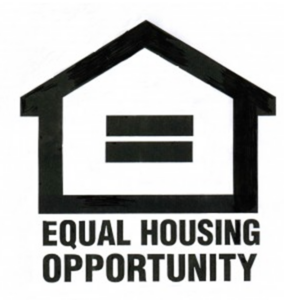Learn more about the Goals Module and its key monitoring and reporting features.



Housing discrimination has been illegal since the passage of the Fair Housing Act (FHA) in 1968. The FHA was intended to both prohibit housing discrimination and reverse the history of housing segregation. To reach those goals, the federal FHA prohibits discrimination in the sale, rental, or financing of housing on the basis of race, color, religion, national origin, sex, disability, and familial status. Through its Equal Access Rule, the U.S. Department of Housing and Urban Development (HUD) interprets the prohibitions against discrimination on the basis of sex and marital status to include sexual orientation, gender identity, and same-sex marriage.

Coverage of the FHA is broad and includes intentionally discriminatory conduct and practices that have an unjustified discriminatory effect. Among other prohibited practices, the FHA’s scope includes taking any of the following actions because of race, color, religion, sex (including gender identity and sexual orientation), disability, familial status, or national origin:
For mortgage lenders, Fair Housing Month is an opportunity to assess your fair lending program and your success in meeting the housing credit needs of diverse borrowers and communities. When evaluating your fair lending program, ask yourself:
When assessing your success in meeting the mortgage needs of communities, lenders should consider whether your institution:
To summarize, fair housing is an important public policy goal as well as critical to a just and equitable society. Mortgage lenders play a key role in helping communities meet fair housing needs. As part of Fair Housing Month activities, lenders should evaluate their efforts and performance in expanding fair access to housing credit.
If your institution needs assistance in conducting fair housing, fair lending, or community credit needs analyses, RiskExec has a team of former bankers, regulators, fair banking officers, and CRA officers that can help. We are proud to help advance fair housing. You can find out more about our solutions at Asurity.com/RiskExec or by contacting me at LWoosley@asurity.com.

Lynn Woosley is a Managing Director with RiskExec. She has more than 30 years’ risk management experience in both financial services and regulatory environments. She is an expert in consumer protection, including fair lending, community reinvestment, and UDAAP.
Before joining RiskExec, Lynn led the fair banking practice for an advisory firm. She has also held multiple leadership positions, including Senior Vice President and Fair and Responsible Banking Officer, within the Enterprise Risk Management division of a top 10 bank.
Prior to joining the private sector, Lynn served as Senior Examiner and Fair Lending Advisory Economist at the Federal Reserve Bank of Atlanta.
[1] An Analysis of Impediments to Fair Housing Choice historically was a requirement under HUD Consolidated Plan and Community Development Block Grant (CDBG) Regulations. Under HUD’s proposed Affirmatively Furthering Fair Housing Rule, similar assessments would be required of recipients of funding from the CDBG program, the Emergency Solutions Grants (ESG) program, the HOME Investment Partnerships (HOME) program, the Housing Trust Fund (HTF), and the Housing Opportunities for Persons with AIDS (HOPWA) program and public housing agencies (PHAs) receiving assistance under sections 8 or 9 of the United States Housing Act of1937. Examples of other useful planning documents include Federal Home Loan Bank Targeted Community Lending Plans and housing policy research from the Mortgage Bankers Association’s Convergence program.
Learn more about the Goals Module and its key monitoring and reporting features.
Learn about the changes of state consumer protection and the responsibility of financial services institutions to pursue operational excellence and a culture of compliance.
Regulatory and technology experts discuss innovation, CRA reforms, and how single-close construction loans are reenergizing rural America.